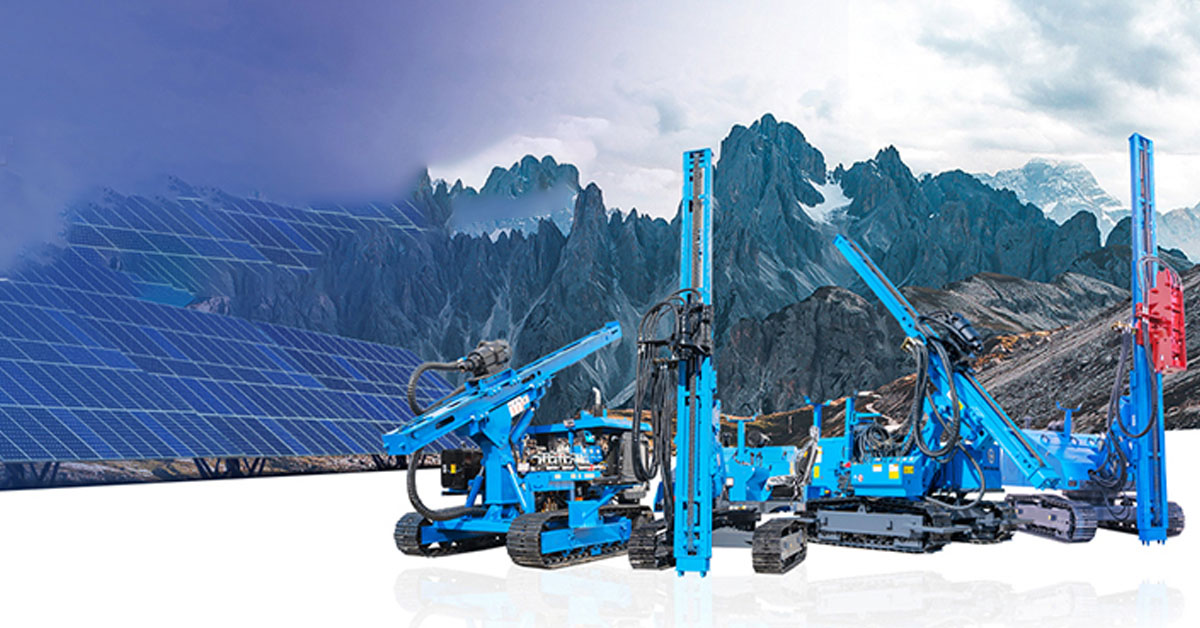
As solar power projects expand worldwide, the demand for efficient and reliable construction equipment has never been greater. One of the most critical machines in solar farm installation is the photovoltaic pile driver, also known as a solar pile driver or solar piling machine. These machines are designed to drive foundation piles into the ground quickly and accurately, providing the stable support needed for solar panels. With the right pile driver, project developers can reduce costs, improve efficiency, and ensure long-term stability of their solar installations.
This article explores the technology behind photovoltaic pile drivers, their types, key features, and how to choose the right machine for your solar project
Why Photovoltaic Pile Drivers Are Essential?
A solar farm’s durability and efficiency largely depend on the quality of its foundation. Traditional piling methods can be slow, labor-intensive, and less accurate. Photovoltaic pile drivers provide several advantages:
High efficiency: capable of installing hundreds of piles per day
Accuracy: GPS and automated positioning ensure millimeter-level precision
Cost reduction: faster installation reduces labor and project costs
Adaptability: suitable for different ground conditions, from soft soil to rocky terrain
Hydraulic Pile Drivers
The most common type in solar construction. They rely on hydraulic power and are versatile, durable, and effective in various soil conditions.
Pneumatic Pile Drivers
Powered by compressed air, these machines deliver strong impact force but are less popular today compared with hydraulic and automated options.
GPS-Guided Pile Drivers
Modern machines combine hydraulic systems with smart positioning. Models such as the RCH530D integrate cloud-based GPS navigation for higher precision and reduced human error.
Remote-Controlled and Robotic Pile Drivers
Manufacturers like Hercules Machinery and Built Robotics have introduced semi- and fully-automated solutions. Machines such as the STR20-RC and RPD 35 Autonomous Robot can be remotely controlled or operate independently, improving safety and efficiency.
Key Features to Consider
Drilling and driving depth: machines vary from 2 meters to over 7 meters in capacity
Accuracy: GPS and point-to-point systems allow precise alignment
Mobility: crawler or wheeled models improve maneuverability on different terrains
Power source: diesel remains common, with focus on efficiency and reduced emissions
Automation and safety: remote operation, tilt sensors, and real-time monitoring increase
productivity and operator safety
Durability and maintenance: strong frames, reliable hydraulics, and easy-access parts reduce downtime
Industry Innovations
How to Choose the Right Solar Pile Driver?
Project size: small projects may not require advanced automation, but large farms benefit from GPS or robotic solutions
Ground conditions: different soil types demand different impact force and adaptability
Budget and ROI: advanced machines cost more upfront but save labor and time, improving long-term returns
Mobility: crawler or wheeled models are necessary for large and spread-out projects
After-sales support: reliable service, spare parts, and technical assistance are essential for smooth operation
Future of Photovoltaic Pile Drivers
The solar construction industry is rapidly moving toward automation, robotics, and AI. Future developments will focus on autonomous operation, energy-efficient designs, data-driven project management, and enhanced safety through remote control.